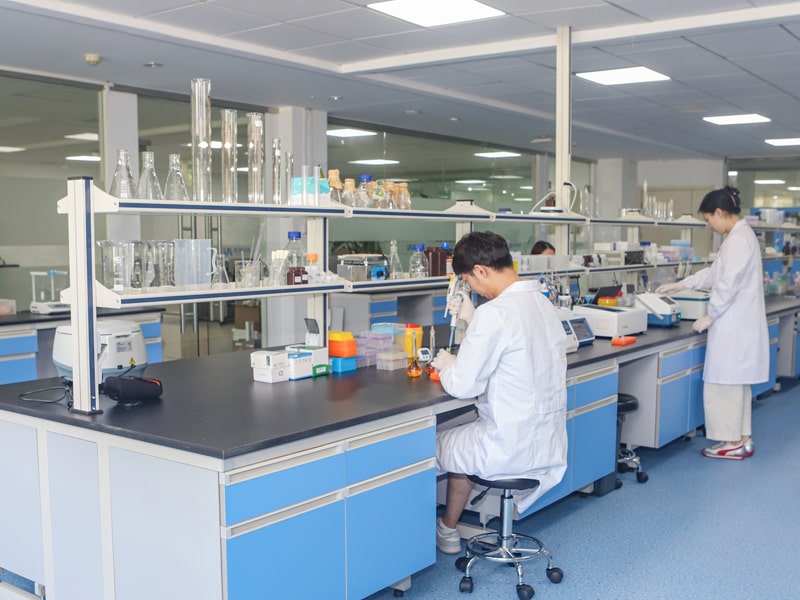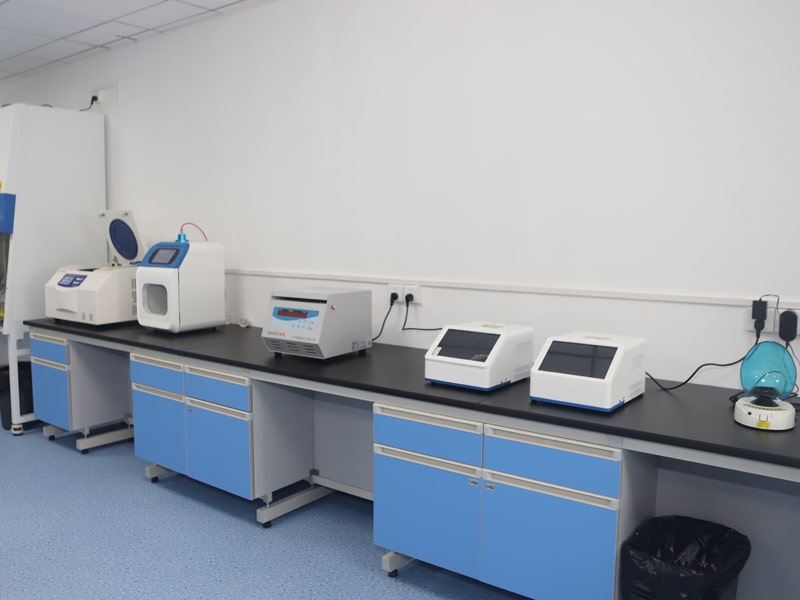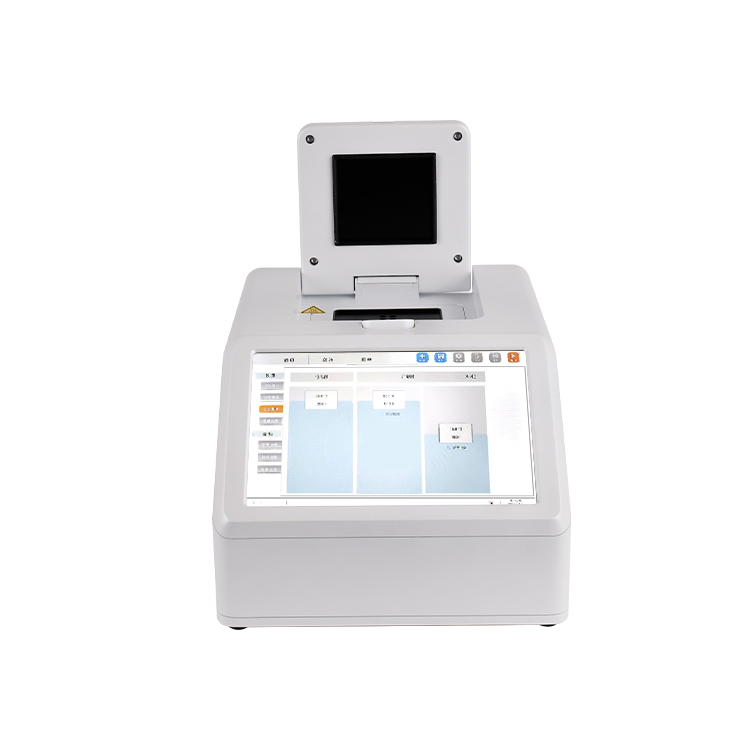Background and objectives of the plan
With the popularization of large-scale farming, animal diseases such as African swine fever, avian influenza, and pig blue ear disease are causing increasingly significant economic losses and public health threats to the farming industry. Traditional detection methods rely on laboratory testing, which has problems such as long time consumption, high cost, and weak grassroots technology. This plan relies on the Hengmei animal disease diagnostic instrument and fluorescence quantitative PCR detection instrument, combined with rapid detection and precise diagnosis technology, to provide farmers with a full process solution from on-site screening to laboratory review, achieving "early detection, early disposal, and early control" of diseases.

Core instruments and technological advantages
1、Hengmei Animal Disease Diagnostic Instrument
Function integration: Supports dual mode detection of colloidal gold immunochromatography and fluorescence quantitative PCR, covering more than 30 common diseases such as African swine fever, foot-and-mouth disease, avian influenza, etc., while detecting veterinary drug residues (such as clenbuterol) and antibiotic abuse issues.
Fast and efficient: Colloidal gold detection takes 15-30 minutes to produce results, PCR detection completes amplification within 1 hour, meeting the emergency needs of the breeding farm.
Portable design: The device is lightweight (≤ 2.5kg), with a built-in battery life of 8 hours, suitable for remote breeding farms or testing during transportation.
2、Fluorescence quantitative PCR detector
High sensitivity: Using real-time fluorescence technology, the detection limit is as low as 10 copies/μ L, which can identify early infection of pathogens.
Accurate temperature control: Marlow refrigeration chips are combined with PT1000 sensors, with a heating and cooling rate of 7 ℃/min to ensure amplification efficiency.
Intelligent analysis: The software automatically interprets CT values, generates amplification curves and quantitative reports, reducing human errors.
Testing process and operating standards
1、Sample collection and preprocessing
Targeted sampling: Select samples based on the type of disease (such as blood, feces, tissue homogenate). For African swine fever, tonsils or spleens should be collected, while for avian influenza, cloacal swabs should be collected first.
Nucleic acid extraction: Using the matching magnetic bead extraction kit, nucleic acid purification can be completed within 30 minutes to avoid cross contamination.
2、On site rapid screening (colloidal gold mode)
Operation steps: Add the sample to the detection card, and the instrument will automatically scan the CT line. The qualitative result (positive/negative) will be displayed within 5 minutes.
Applicable scenarios: daily inspections, preliminary screening of suspected cases, and rapid screening for African swine fever in pig herds with fever or diarrhea.
3、Laboratory precision diagnosis (PCR mode)
Reagent configuration: Select a multiplex PCR kit (such as ASF, PRRS, CSF, PEDV for pig disease quadruple detection), and use a single reaction system to detect multiple pathogens.
Amplification program: The preset program starts with one click and completes 40 cycles in 45 minutes, monitoring fluorescence signals in real-time.
Result interpretation: The software automatically compares the threshold and generates a detection report (such as Ct value, pathogen type, and load).

Technological advantages and solutions to industry pain points
1、Lowering the detection threshold
Farmers do not need a professional laboratory and can complete testing through touch screen operation. The accompanying APP provides remote guidance, reducing dependence on veterinarians.
2、Improve prevention and control efficiency
When the epidemic occurs, the initial screening on site should be completed within 30 minutes, and positive samples should be immediately sent for testing and review to block the transmission chain. For example, the sensitivity of African swine fever detection is 100%, and the specificity is 99.8%, avoiding misjudgment.
3、Cost control
The cost of colloidal gold detection is 30% lower than traditional ELISA methods, and PCR reagents support freeze-drying preservation, reducing cold chain costs during transportation at room temperature.
4、Data management
The detection results are automatically uploaded to the cloud to generate epidemic maps and trend analysis, and assist in formulating immunization and disinfection and sterilization plans.
Application scenarios and cases
1、Daily monitoring
A large-scale pig farm conducts weekly sampling of 10% of pig herds, using colloidal gold to detect foot-and-mouth disease antibody levels and PCR screening for PRRSV variants.
2、Emergency response to the epidemic
After an acute death of pigs is found in a breeding farm, the PCR test of African swine fever will be completed within 2 hours, and isolation and disinfection and sterilization will be started immediately after confirmation of positive, so as to avoid culling in the whole village.
3、Cross regional circulation supervision
The pigs entering the slaughterhouse are tested for swine fever virus using a portable PCR instrument, and a quarantine certificate is issued within 30 minutes to prevent sick pigs from entering the market.
Supporting services and guarantees
1、Technical training
Provide on-site operational training, including sample processing, instrument calibration, and data analysis, to ensure independent use by farmers.
2、Reagent supply
Conventional reagents can be delivered directly nationwide within 48 hours, and emergency needs can be supported by drone delivery to ensure supply in remote areas.
3、Equipment maintenance
Remote diagnosis of faults, on-site repair within 24 hours, and lifetime warranty for critical components such as temperature control modules.
Summary
This plan constructs a closed-loop system of "rapid screening accurate diagnosis data management" through the collaborative application of Hengmei diagnostic instrument and PCR detection instrument, significantly improving the disease prevention and control capabilities of farmers. In the future, AI image recognition technology can be combined to further optimize the symptom screening process and promote the intelligent and unmanned development of animal disease monitoring.
Article address:https://www.molecularbio.cn/solu/25.html













